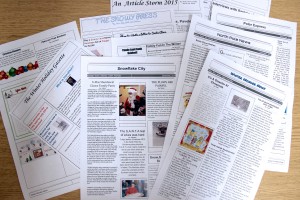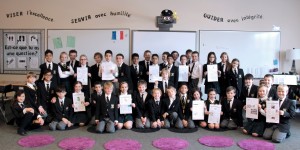New Day, New Course, Same Anxieties
So after a two week break, we are back at it! New course, new classmates, new teams. And all those beginning thoughts and anxieties creep back in. All the readings and all the assignments with their looming due dates increase my heart rate and the unfamiliar material brings back imposter feelings and the now familiar ‘what was I thinking?’ feelings. But then the waters begin to calm a little and confidence starts to whisper in my ear telling me that this is totally doable, and that I just need to get started. So here we go.
This course focuses on the fundamentals of program planning within the context of technology-mediated learning (TML) initiatives.
The first reading I did was in Managing technology in higher education (Bates & Sangra, 2011). I was struck by the opening couple pages which talked about how universities are failing in technology. The authors suggested that universities don’t really get it as far as technology is concerned and that radical change in needed in the design and delivery of teaching if they are going to survive in the 21st century (p. 4). This reminded me of a conversation we had at a recent staff meeting. As a faculty we were talking about how we teach K-12 students and how we still need to move forward with technology mediated learning and innovative teaching methods such as more blended learning and project based learning. One faculty member, whose son is currently in university countered that universities are not changing as rapidly as K-12 schools seem to be and he wondered if these students will end up being unprepared for the current university environment of large face to face lectures and individual assignments if we are teaching students more collaboratively and using technology in innovative ways. It seems like a very good question and one for further thought and contemplation. Bates and Sangra (2011) list a number of skills and competencies that knowledge-based companies have identified including communication skills, social skills, teamwork, thinking skills and knowledge identification and state that knowledge-based companies depend on innovation. They also list typical characteristics of millennials which includes being digitally literate, connected and experiential. If we are not teaching and incorporating these skills and characteristics into higher education, how are these students going to be prepared for the workplace? Based on the case studies that Bates and Sangra (2011) discuss it is evident that some universities are working hard to change and innovate with varied success while others are slow to recognize the importance of technology and how to best integrate it into their institutions. This also makes me realize how lucky I am to be a student in an institution that is so progressive in its use of technology.
It was not surprising to me that the authors concluded that leadership and strategic planning are important to the effective implementation of technology integration. I am moving into a leadership role this year as a curriculum, innovation and technology specialist. I am cognizant of the need to facilitate and and guide teachers as opposed to telling and managing. The same way that as a constructivist teacher I try to act as a guide and facilitator, so too should this be true when working with colleagues.
Our next reading, in Planning programs for adult learners: A practical guide, offered the interactive model of program planning (Caffarella & Daffron, 2013). It was interesting to think of my own experiences when looking at the five primary purposes for education and training programs. I noticed that much of my experience was towards “encouraging continuous growth and development of individuals [and] assisting organizations in achieving desired results and adapting to change (p. 5)”. I have planned and delivered workshops in the areas of documentation and implementing technology in elementary school classrooms within my own organization and at international conferences all with the goal of teachers gaining confidence and capacity to implement these initiatives into their teaching. My current role as curriculum, innovation and technology specialist allows me to assist teachers in implementing our schools current priorities which include using the Reggio Emilia philosophy to deepen teachers understanding of the documentation process, expanding the character education program and introducing students to global education issues, perspectives and initiatives (Jr. School Faculty binder, 2015, p. 67-70). I also thought of my current graduate program, whose purpose would be to prepare me for my current and future work opportunities. I agree with Caffarella & Daffron (2013), from experience and reflection that the expectation in all of these is some sort of change. Whether that is change in the individual, the faculty, or the organization.
When looking at the interactive model of program planning (Caffarella & Daffron, 2013), I saw familiar vocabulary and could relate to much of the components. I have taught at an International Baccalaureate (IB) world school, and although the planning is for younger students, many of the components are the same. I could relate more readily to the inside components of content, evaluation, instruction, goals and objectives, needs assessment and support. The outside components of details, marketing and budgets are less familiar to me in a program planning sense. Very different from my current experiences was that this model has no clear beginning or ending. I am used to planning programs with a definite beginning and ending and the planners that I have used are more linear because of this. I began to think about how I might use this model in my own practice and how using the model might change my thinking about program planning. I liked the flexibility of this model and could envision using it in future planning. This model seems to use a constructivist approach which I can relate to and appreciate. There are lots of thoughts and ideas swirling around as I dive into this new course. Again, I am enthused and inspired.
References:
- Caffarella, R.S. (2013). Planning programs for adult learners: A practical guide (3rd ed., pp. 27-51). San Francisco: Jossey-Bass.
- Junior School Faculty and Staff Binder (2015). St. John’s Ravenscourt School, Winnipeg, MB.



